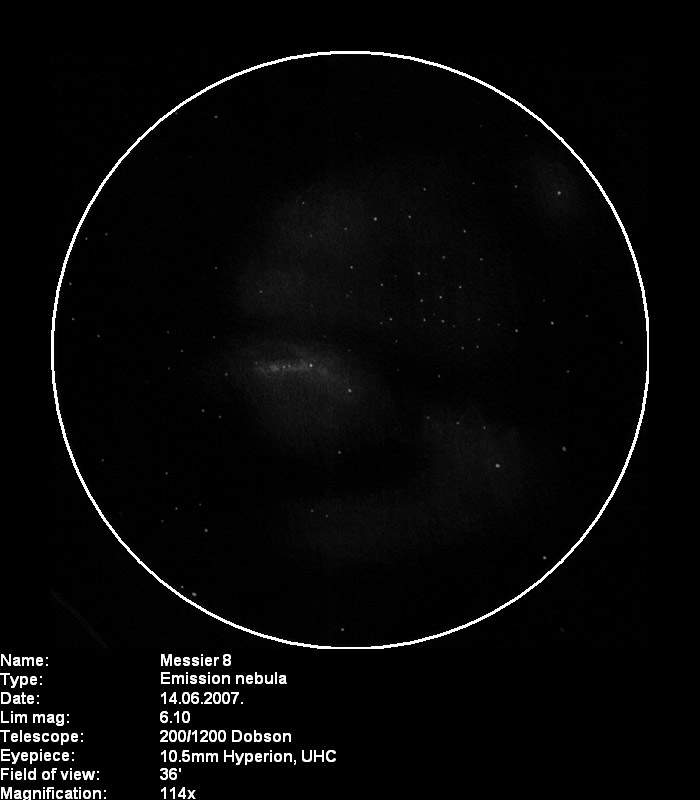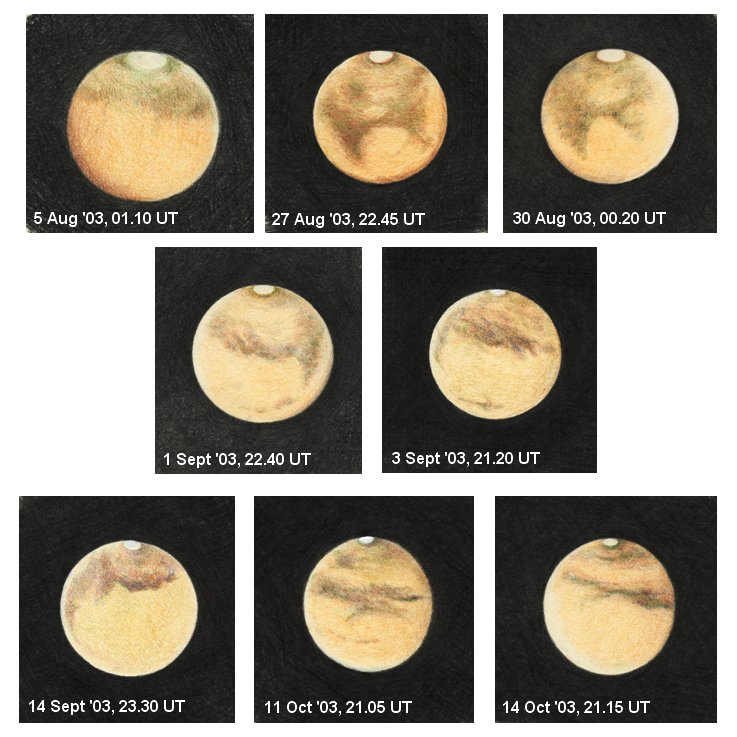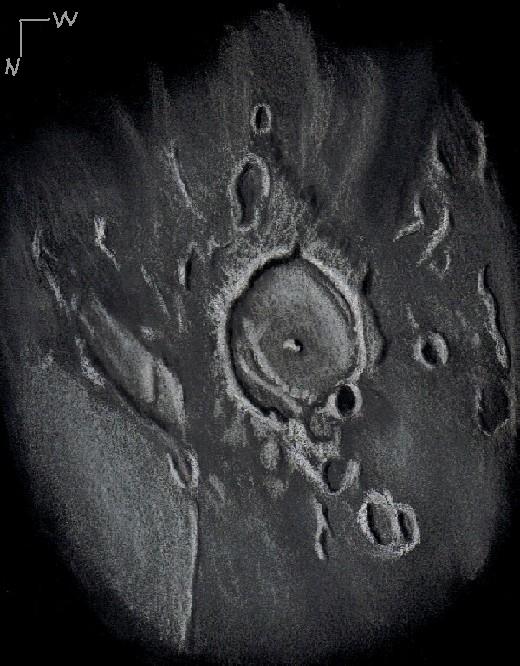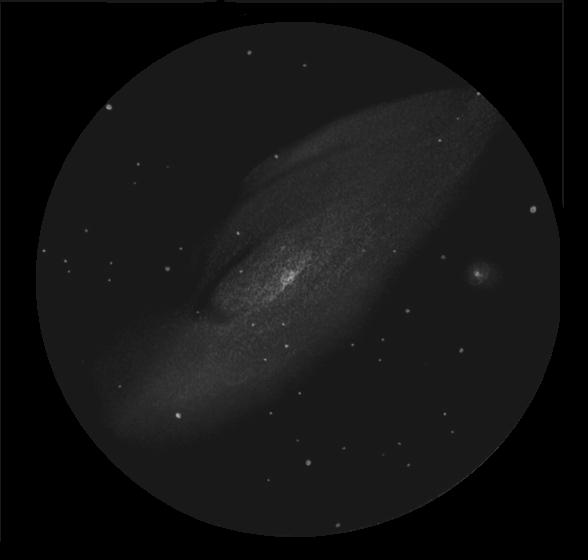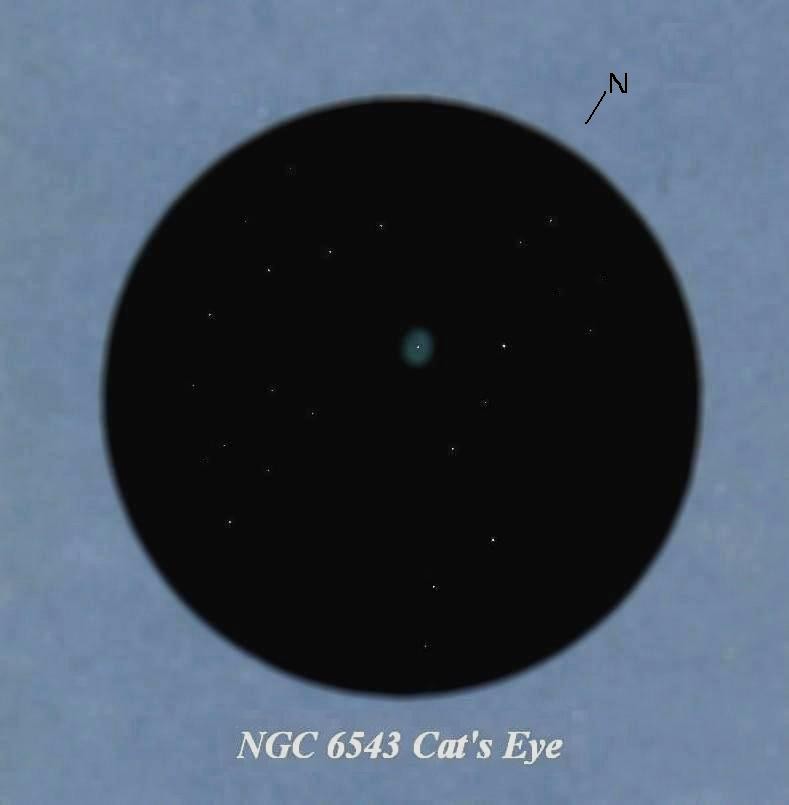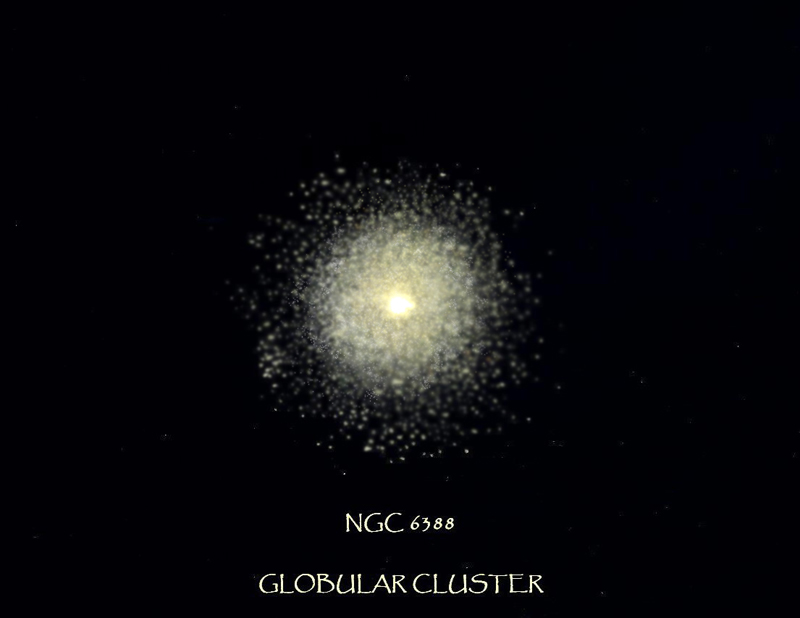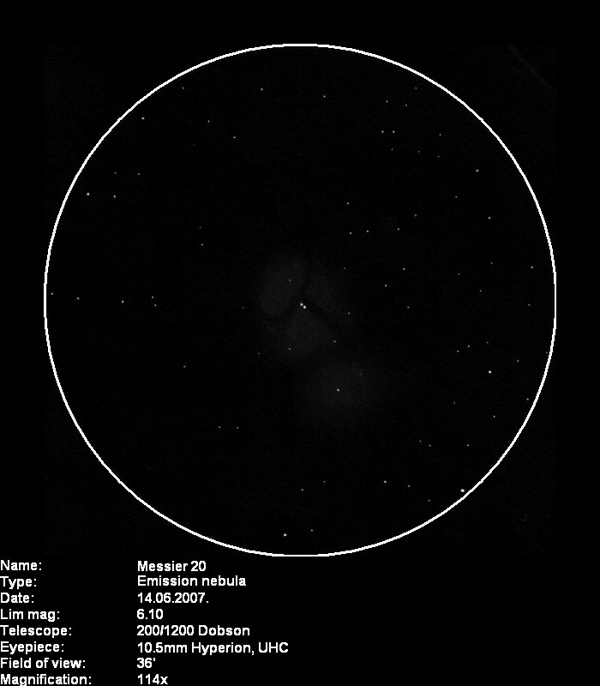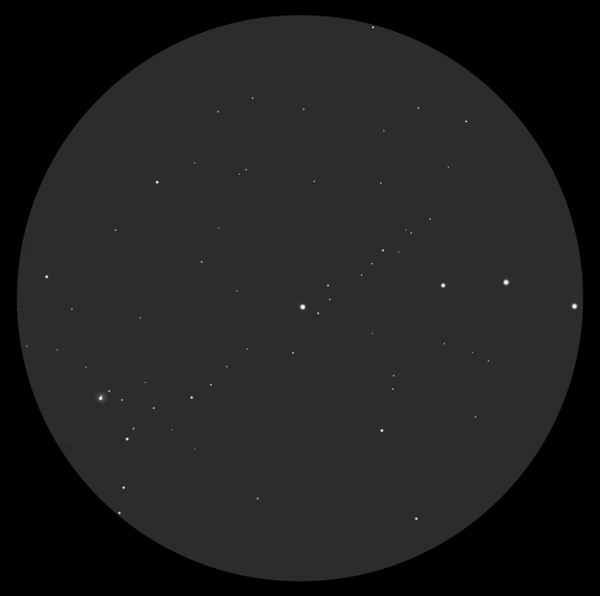14th June, 2007., around 21:00 UT
Petrova gora, Croatia
Last night I had another opportunity to observe. But this time, we went
to the Petrova gora, mountain maybe 1000 ft high, about 40 miles South
from the Zagreb and 20 miles South-East from the Karlovac (pop: 60 000).
Light pollution is still evident on northern horizon but to the South,
skies are beautiful. NELM near zenith was 6.10, not much difference from
the best night in my backyard (NELM 5.80) but big difference is that
there is no glare from street lamps and glow from nearby populated
places so sky is much darker. Watching MW composed from many clouds,
with few bright spots (M24, M8, M25), seeing M7 by naked eye is
wonderful feeling. Statement that there is no substitute for dark skies
hold very well. Of course, I used this opportunity to make more
sketches. I hope you will like results.
My process of creating sketches goes like this:
First, I observe and draw field sketch, full of notes, corrections and
other helpful stuff. After returning to house, I redraw all sketches to
include missing details, remove errors and to get better contrast under
white light. Next step is scanning of sketches. Afters scanning, I do
further adjustments of contrast in the Photoshop and add circle
representing that represents FOV. Last thing is description and saving
sketch in .tff and .jpg format.
I’m sketching on plain A4 paper with graphite pencils of different
hardness.
Vedran Vrhovac

